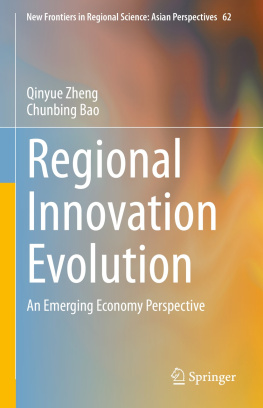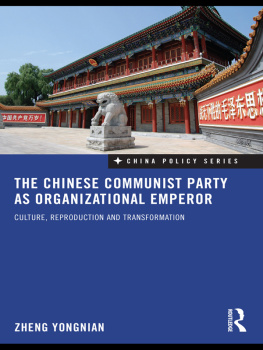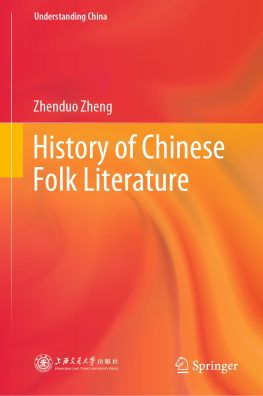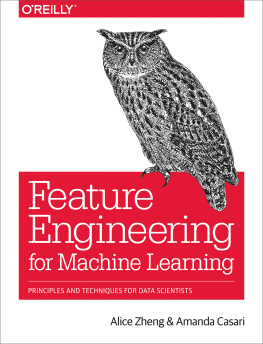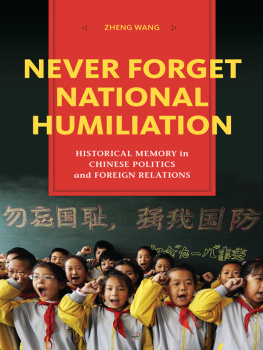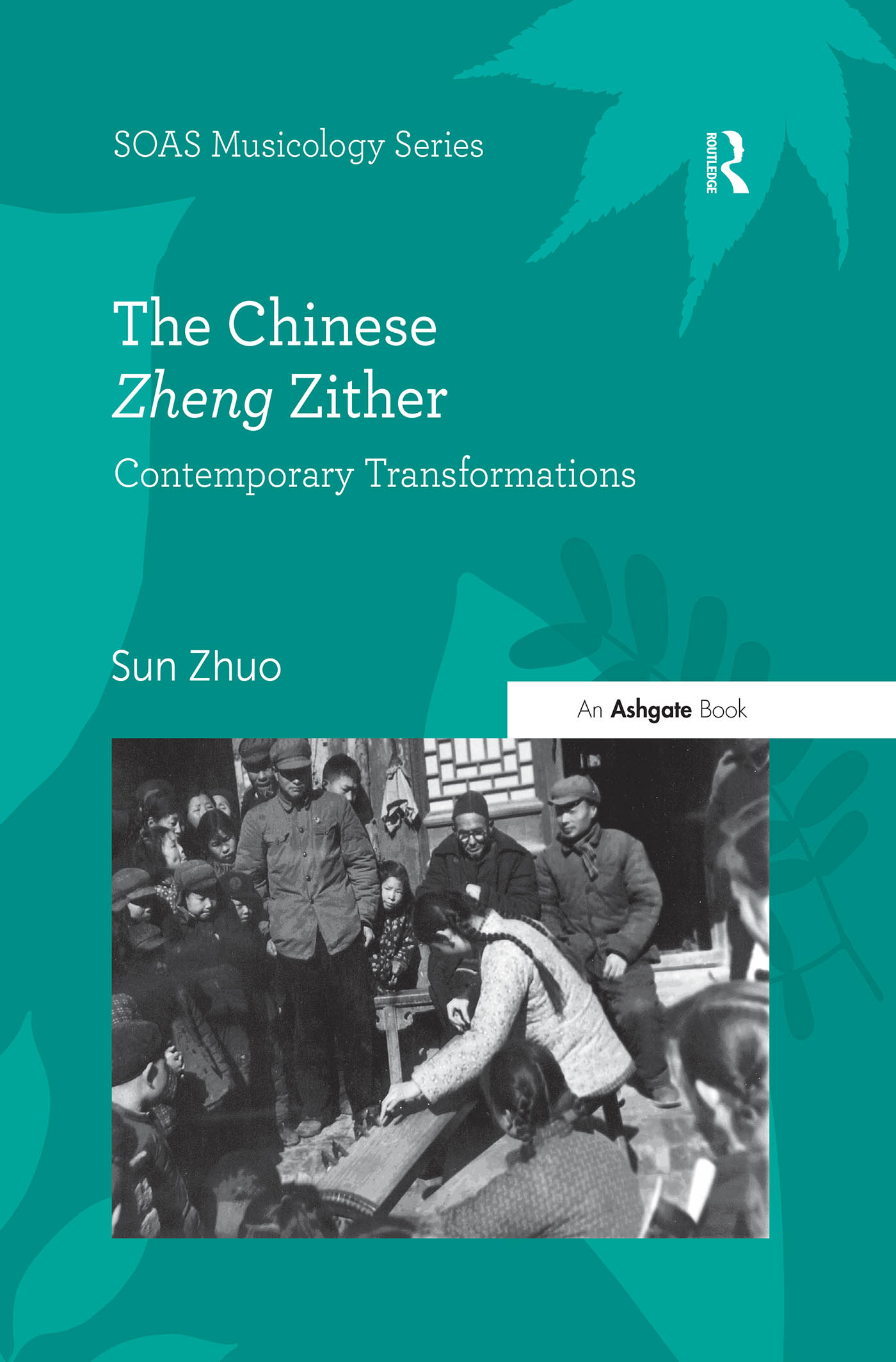Contents
To my parents, Qu Yun and Sun Fenglin
This DVD contains 10 music tracks and 4 video tracks. The music tracks are in mp3 format, and can be played using Windows Media Player or any compatible programs. The video tracks are in mpg format, and are also playable using Windows Media Player or other programs.
Note that the performances used for this study were recorded at different times and in different situations. The relevance of these recordings to the study has been given priority rather than the sound quality, which therefore varies.
Track 1 (Video example) Bantou qu Gaoshan liushui (High Mountain and Flowing Water) (see ). Sanxian: Huang Tianxi; zheng: Hui Chuangui; pipa: He Chengqian; recorded by the author on 21 May 2007, Nanyang. The piece Gaoshan liushui is always performed at the beginning of a gathering, symbolizing harmonious friendship between quyou.
Track 2 Zheng solo Gaoshan liushui, performed by Li Bian). The zheng performer in this piece is the daughter of dadiao quzi master Cao Dongfu. Li Bian also undertook her training at the China Conservatory of Music in Beijing. Compared with Track 1, the same musical material is reinterpreted with a brighter tone quality and at a faster tempo, using more complex playing techniques such as tremolos, fingering suites and long left-hand glissandi combined with right-hand octaves.
Track 3 Singing Fishermen Returning in the Twilight (Yuzhou changwan), composed by Lou Shuhua, performed by Cao Zheng, excerpted from the album Gaoshan Liushui (High Mountain and Flowing Water), various artists, Zhongguo changpian gongsi, Beijing, 1962. In this recording, Cao used a silk-stringed (probably 13-stringed) zheng.
Track 4 Bantou qu piece Xiaofei wu (Dance of Lady Xiao) (see ). Sanxian: Cao Dongfu; pipa: Xie Kezong; zheng: Wu Zongcen; mihu: Wang Xingwu; ban: Yao Rongzhi. 1962 Central Conservatory of Music Library. In this recording, Cao Dongfu and Wang Xingwu play the sanxian and mihu respectively, although they are better known as zheng masters. Both Cao and Wang were later involved with conservatory teaching, and many Henan folk zheng pieces found in the mainstream zheng repertory today were transmitted by them. As far as I can ascertain, Wu Zongcen, the zheng player in this recording, was known as a good folk zheng player from Dengzhou.
Track 5 Zheng solo piece Xiaofei wu, performed by Li Bian, excerpted from the album Luoyuan: Henan Zheng Music). This solo piece was arranged by Cao Dongfu and played by his daughter Li Bian on a steel-stringed zheng. The music is based on Xiaofei wu, a bantou qu labelled melody. The zheng piece incorporates ornamentations which are inspired by other instruments in the bantou qu ensemble, and is played with a brighter and more articulated sound quality. In comparison with Track 4, along with Tracks 1 and 2, these examples demonstrate a close relationship between regional-school zheng music and folk ensemble music.
Track 6 Qing fengnian (Celebrating the Harvest), music composed and performed by Zhao Yuzhai, excerpted from the album Yidai zongshi (Master of the Generation). When this piece was first performed in 1955, it was credited as a milestone in contemporary zheng composition due to its innovative style and application of new techniques. The music opens with chords using both hands, and later we hear the sweeping and damping of strings, imitating percussion instruments. The piece combines Shandong folk tunes and quasi-improvisation. The date of this recording is not given, but it was probably made when Zhao was in his seventies (during the 1990s).
Track 7 Jinxian diao hulu (Gourd Hanging on a Golden Thread), adapted by Zhou Yanjia in the 1950s, performed by Zhou Yanjia, from the album Zhongguo zhengqu (Chinese Zheng Music). This piece of solo zheng music is an early qinzheng composition from Xian Conservatory of Music. The music is adapted from a labelled melody from the mihu opera Jinqian diao hulu. See Examples 4.1 and 4.2, and note the direct adaptation of folk drama music into the zheng repertoire here. This performance was recorded in 2001 on a modern 21-stringed zheng.
Track 8 Zhao Gengchen recites (yunqu) a labelled melody from the Xian guyue piece Xiangshan shegu. Recorded by the author, 17 February 2006, Xian. See Examples 4.11 and 4.12 for the influence of the folk piece on this section of the new zheng composition Xiangshan shegu. The singer, Zhao Gengchen, is a well-known Xian guyue artist of the Dongcang Guyue Society. He has been involved in Xian guyue since the 1930s. In 2008, at the age of 91, he was made a Bearer of Intangible Cultural Heritage by the Chinese Ministry of Culture.
Track 9 Zheng solo Xiangshan shegu (Temple Fair on Xiang Mountain), composed and performed by Qu Yun, excerpted from the album Xiangshan Shegu. Compare this with Track 8, and see Examples 4.5, 4.7, 4.11 and 4.14 for the influence of Xian guyue music. In this recording, Qu Yun used a steel-strung 16-stringed zheng.
Track 10 Zheng solo Huangling suixiang (Capriccio for the Great Mausoleum of the Yellow Emperor), music composed by Rao Yuyan, performed by Sun Zhuo, excerpted from the album Huali (Magnificence). See Examples 4.17-23, and pay attention to the opening, transition section and the ending. Note the difference between the recorded performance and the score.
Track 11 Duet for Zheng and Violin, by Chen Xiaoyong, a Chinese contemporary composer based in Germany. Written in 1989, this was the first piece in Chens musical output to make use of Chinese instruments after his departure from Beijing in 1985. Zheng: Sun Zhuo, violin: Lu Yang, live recording from the concert Dialogue with the Zheng - Sun Zhuo Zheng Recital, Music Department Concert Series, University of Sheffield, 2 May 2006. (See also Examples 5.1-3.)
Track 12 Circuit, by Chen Xiaoyong (1996). In the preface to his score, Chen describes how the work evolved in an iterative manner, which was atypical of his usual style of composing. After an initial sketch, the work was played and recorded, then revised. Each successive version was further revised, and the work went through several generations of sketches and transformations, bringing about a result which was quite different from what I would have written directly. The work evolved like an organism . Out of initially simple forms, highly complex and colourful structures were generated, gradually dissolving to form a sort of cycle or circuit. This is an example of contemporary experimental zheng music by a Chinese composer living abroad. Chen Xiaoyongs zheng music features innovative timbres, playing techniques and musical textures. The overall effect takes the piece some distance away from traditional zheng music. However, the fundamental thought processes behind his zheng compositions are usually based on Chinese classical literature or Chinese philosophy. This is a live recording from the concert Dialogue with the Zheng - Sun Zhuo Zheng Recital, Music Department Concert Series, University of Sheffield, 2 May 2006. (See also Examples 5.4-10.)


